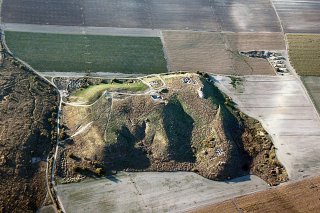The Gath blog has been mentioned here before, but it’s worth mentioning again because they are doing a great job of keeping it updated, and with things that you don’t always see. Last summer the so-called “Goliath inscription” was in the news and they have a very nice high-resolution photo of it.
The “bottom line” of the post shows the significance of the discovery:
1) the inscription demonstrates that ca. the 10th/9th cent. BCE, names very similar to Goliath were in use at Philistine Gath. This does provide some cultural background for the David/Goliath story; 2) that already early in Iron IIA, the Philistines adopted the Semitic writing systems.
The recent posts have a good variety of helpful, large photos of an archaeological excavation. Good for teaching, especially if you haven’t been on a dig to take the photos yourself!

 There are also some nice high-resolution photographs of last year’s excavation, for those looking for some good pictures to teach about archaeology.
There are also some nice high-resolution photographs of last year’s excavation, for those looking for some good pictures to teach about archaeology.